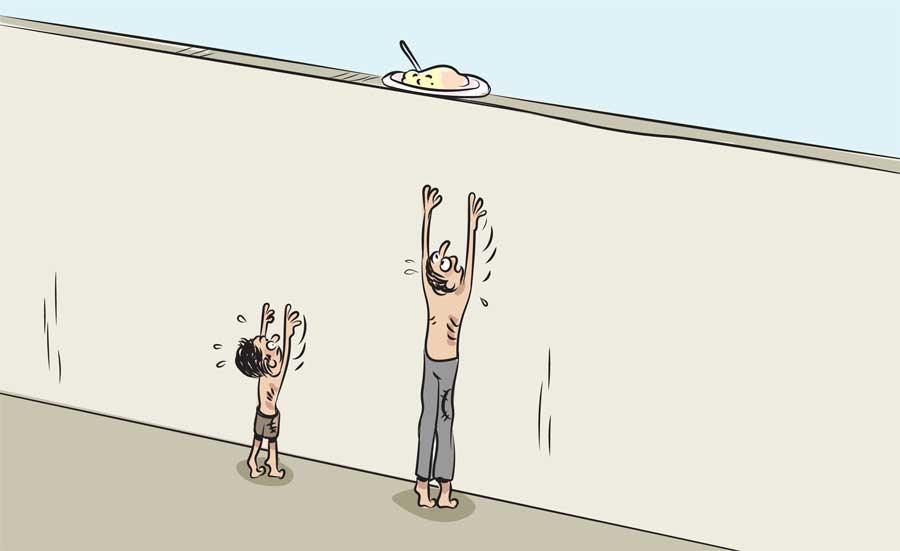Reply To:
Name - Reply Comment

The deepening economic crisis in Sri Lanka is felt mostly by children. This was highlighted recently by an official of the United Nations’ World Food Programme (WFP) who toured the island on a fact finding mission.
Sri Lanka boasts of traditional food like red rice, varieties of greens, green gram and manioc among other nutritious consumables that are put on the table for breakfast and at other meal times. But there is also the issue of most children not fancying these nutritious foods; hence the need for parents to spend on eatables like bread and food carrying lesser nutrition values. Even these foods with lesser nutrition values are not affordable for the masses now with a loaf of bread being priced at Rs 300 and an egg at Rs 50.
The problem facing parents now is that food like bread, eggs, chicken and fish cannot be afforded by even the middle income earning families. Often the meal packet or lunch box of the average school-going child is a pathetic sight. A television commercial run on Sri Lanka television shows how other children in a class chip in with contributions when a child from a less affluent home shakes his lunch box before opening it and goes to wash his hands prior to taking his meal. The empty lunch box is filled with morsels of food given by the others which ensures the less fortunate child has something to munch on when returning to his seat in class for a meal. If you watch this advertisement again and again we observe that there are caring people around, but the message that there are plenty of children out there who go without a meal during a break in school education mustn’t be lost in appreciating this thoughtful advertisement; made to promote a leading product.
According to the findings of WFP Regional Director for Asia and Pacific John Aylieff-who visited Sri Lanka-as many as four out of five householders in the island limit food portion sizes or skip meals to cope with the worsening
economic situation.
The lawmakers of this country are always quick to show to the world that all is well in the country. This is a time when the Government of Sri Lanka is trying to comply with the authorities of International Monetary Fund to obtain a loan. It may be because of that that a Sri Lankan minister was quick to make a response to the story making the rounds that there is malnutrition and a scarcity of food in Sri Lanka. The minister had said that the malnutrition situation in the island has improved for the better. According to the minister malnutrition which was 27.4% in 2009 had dropped to 12.2 % in 2021.
In this backdrop there are certain organizations-private and religious-which operate food kitchens at present. Apart from that many international organizations have shown concern regarding the worsening food crisis in Sri Lanka. In June there were reports that the UNICEF had launched an appeal to raise US$ 25 million to provide humanitarian aid to 1.7 million children in Sri Lanka. The UNICEF has also stated that the economic crisis in Sri Lanka is indeed a children’s crisis.
By the way the GoSL has- despite these economic woes- continued with the aid programme of supplying the mid-day meal to 1.8 million children from as many as 7926 schools. According to local media reports about 25% of the total schoolchildren have benefitted from this programme.
The government has plans to lift this country out of this worsening economic situation and the focus is on renegotiating on existing loans and going for the much awaited IMF bailout. But amidst this economic puzzle that has drawn all the focus in search of a solution children who are starving mustn’t be forgotten.
If the aged lawmakers of this country need some nudging to address this gloomy economic situation affecting children they could be provided with a clue via an old saying which goes, “When you are young and need the food you have no money. When you are old and can afford the food it is bad for
your health”.